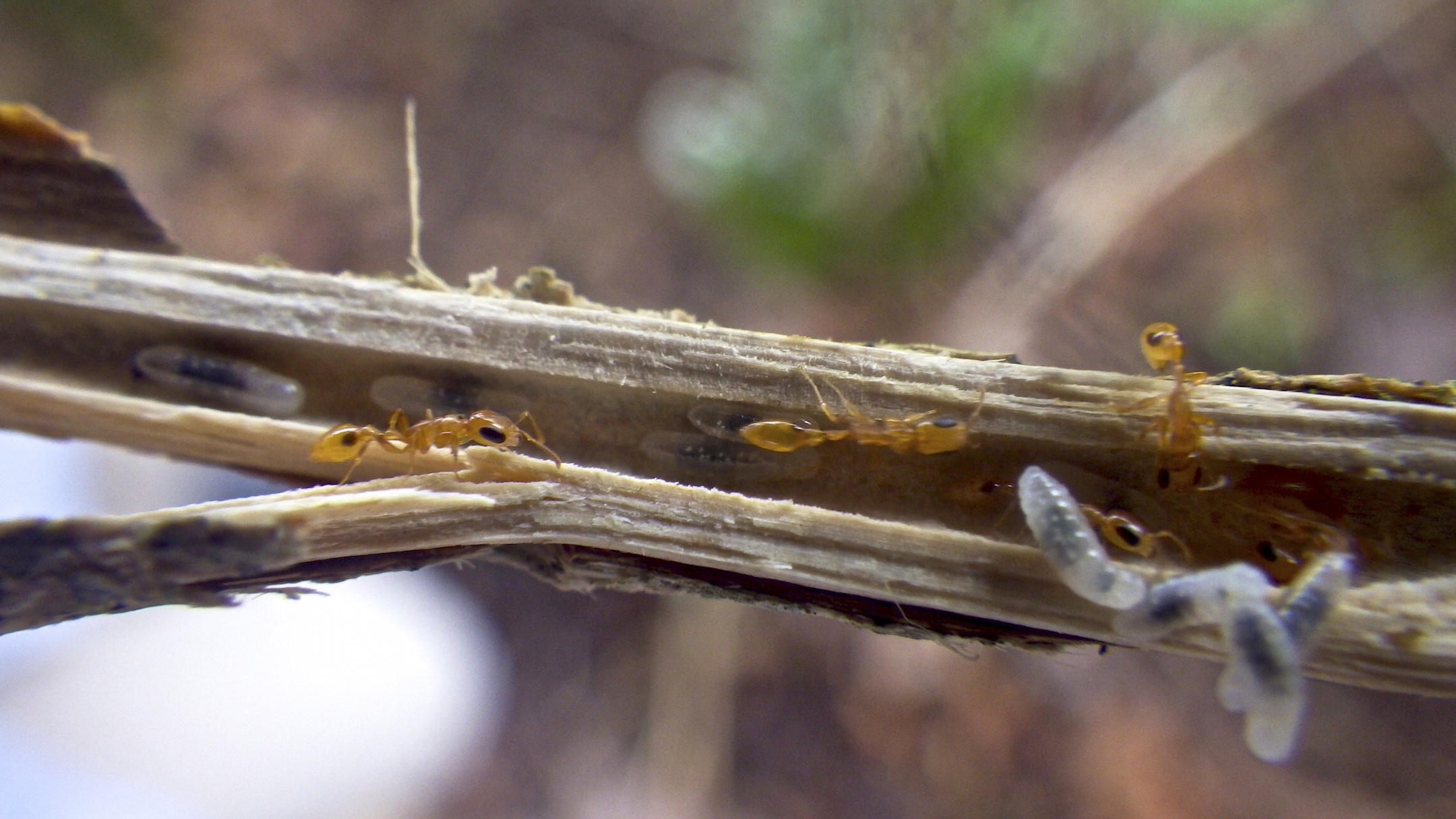
Changes in species richness, abundance and community composition of arboreal twig-nesting ants along an elevational gradient
Social Sciences
ENVS195A12
The distribution, diversity, and assembly of tropical insects has long intrigued ecologists, and for tropical ants, can be affected by competitive interactions, microhabitat requirements, dispersal, and availability and diversity of nesting sites. Arboreal twig-nesting ants are limited by the number of hollow twigs available, especially in intensive agricultural systems. Elevation may impact ant diversity and abundance, but no studies have examined if nest-site limitation or richness of arboreal twig-nesting ants varies with elevation. In coffee agroecosystems, there are over 40 species of arboreal twig-nesting ants. I examined communities of twig-nesting ants in coffee plants along an elevational gradient to answer the following questions: (1) Do species richness and colony abundance change with elevation? (2) Does community composition change with elevation? (3) Is elevation among the more important predictors of changes in the ant community and how do changes in coffee management interact with changes in elevation? I surveyed forty-two 10 x 10 m plots in 2013 from 450-1550 m elevation across a coffee landscape in Chiapas, Mexico. I sampled a total of 2211 hollow coffee twigs, 77.1% of which were occupied by one of 28 species of ants. Pseudomyrmex simplex was more abundant in lower elevations, while Pseudomyrmex ejectus dominated in high elevations. Species richness and the percent of occupied hollow twigs both peaked at mid-elevations (between 800-1050 m). In sum, I found that species richness, abundance, and composition of arboreal twig-nesting ants change with elevation. These findings may provide important insights for understanding the role of these ants as predators in coffee agroecosystems.